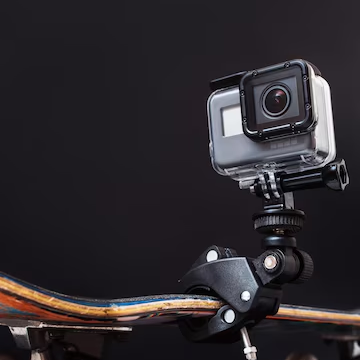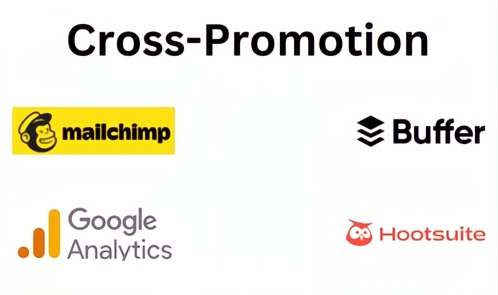In today’s digitized environment, the noise of literally hundreds of brands fighting for attention can be overwhelming. Such innovative strategies can help cut through this cacophony, capture the audience’s attention, and increase the reach of your message. Cross-promotion boosts content views on one platform using audiences from another. Done right, it will increase the voice of your brand, grow its reach, and create effective growth. That is why, if your business seeks any digital marketing services in UK, you must understand and put into practice effective cross-promotion strategies in order to be competitive in such a competitive market and achieve substantial online coverage.

The Concept of cross-promotion in digital marketing
Cross-promotion uses one platform or channel to tactfully promote the other. This could be a brand across social media channels, email newsletters, websites, blogs, or partnered with other brands. It really boils down to developing a systemized way to engage people with your content across multiple touchpoints.
For example, drive traffic from Instagram to a blog post or feature YouTube videos in email newsletters. This strategy leverages each medium’s reach and strengths, exposing your content to a diverse audience.
Benefits of Cross-Promoting Content
Increased Reach and Visibility: Cross-promotion can do very well within other audiences at other platforms, specifically working to help your reach grow astronomically high beyond the potential of one channel. According to Statista, on average, a social media user is active on 6.6 social sites monthly. Cross-promotion aids in enhancing such chances connected with increasing the reach.
Better Engagement: All of the platforms have special ways of engaging users with your content. For example, Instagram does well with regard to visual storytelling, and Twitter has gone a long way to help in terms of real-time conversations. Cross-promotion will help you in keeping audience engagement in ways most suitable to each platform.
Better search optimization: Cross-promotion is going to raise your search rankings. Sharing content on at least several different platforms guarantees a considerable volume of backlinks. The analysis by Moz positions high quality backlinks in the top three ranking factors used by Google for search ranking.
Cost-Effective Marketing: Since cross-promotion is using maximum value from already existent content, additional money spent on ads is reduced. Content Marketing Institute states content marketing costs 62% less than traditional methods and generates three times more leads. Cross-promotion stretches this budget for content marketing even higher.
Established Brand Continuity: Cross-platform promotion ensures one message in the content for a brand. This is very critical in brand recognition and trust. According to Lucidpress, revenues increase up to a 23% boost through consistent brand presentation.
How to Cross-Promote Content Effectively
Get to know your audience: Understanding what your audience prefers and does on different platforms is very critical. Use analytics tools to find out where your audience is most active and exactly what type of content they engage with the most. Tailor your cross-promotion strategy accordingly.
Play to Platform Strengths: Each has its strengths. You can give users a soft launch with Instagram Stories—for instance, peek at a new blog post and drive them to the actual article. You could also share long-form, detailed content related to your profession on LinkedIn and save Twitter for quick updates that are relevant and engage in the related conversations. Whatever the platform, tie in your brand.
Use Analytics: Measure the performance of your cross-promotion outreach regularly. Track the key metrics, such as traffic, engagement, and conversion rate, through Google Analytics, in-app analytics that most social media platforms provide, or email marketing analytics. Use insights to improvise on fine-tuning the strategy for better results.

Influencer Collaboration and Partnerships: Collaborate with influencers or other brands to maximize cross-promotion. Again, the same influencers have audiences that are deeply devoted and trusting of the recommendations that their favorite influencers make. Actually, based on the 2017 study by Influencer Marketing Hub, businesses return $5.20 on every dollar spent on influencer marketing. Collaborations with complementary brands can also help in the pursuit of new audiences.
Identical Branding: Keep your brand consistent across all platforms. Logos, color schemes, and tone of voice should be the same everywhere. This will increase the development of a strong brand identity and, therefore, let one’s content be recognized at first sight.
Case Studies of Successful Cross-Promotion
Nike: Cross-promotion is not solely owned by HubSpot. Nike does it masterfully, from daily engagement on social media to their website and in their email newsletters. As an example, they will introduce new products with a teaser video on Instagram, followed by a more in-depth blog post and an accompanying email campaign. This multi-channel approach creates maximum potential for engagement with maximum reach.
HubSpot: Of course, cross-promotion is one thing HubSpot has nailed—driving traffic and generating leads. The company gave abusive attention to detailed blog posts and then pinned them on all of LinkedIn, Twitter, and Facebook. Not to mention email newsletters are implemented into the top content so that it can drive people right back to their website. It would increase any visibility and further improve SEO by backlinks from the mentioned above various channels.
GoPro: GoPro also uses user-generated content at a higher level to cross-promote by encouraging customers to share their cool, adventurous moments taken with their GoPro cameras through social media. GoPro blew that across their platforms, which not only assured more engagement with them but also gave them real, relevant content.

Tools to Assist in Cross-Promotion
Hootsuite: Hootsuite is a social media management tool where one can schedule posts in advance across a number of platforms, therefore easily handling cross-promotion.
Buffer: Buffer is the all-you-need tool to schedule and analyze your social media posts. It tells when it’s a great time to post for maximum engagement.
Canva: Canva is a graphic design tool to easily create eye-catching content in different formats required for various platforms, so all your cross-promotion materials are professional and branded.
Google Analytics: Google Analytics helps in highly extensive website traffic analysis so that you can track the success of cross-promotion efforts.
Mailchimp: Mailchimp is an email marketing tool to send out targeted email campaigns in promotion of your content and complement the efforts on social media and websites.
FAQS on cross-promotion in digital marketing
1. Define cross-promote content. Why, in your opinion, is it significant?
Cross-promotion of content means promoting content from one platform or a channel onto another. lt’s paramount since it maximizes reach and engagement through apt utilization of disparately located strengths and core audiences across different platforms. This aids you to grow your audience, enhance SEO and be brand consistent.
2. How does cross promotion help me improve my SEO?
You will increase your chances of getting more backlinks to your content through cross-promotion. When sharing on other networks, you are actually creating new backlinks pointed toward your website or the source itself. Since backlinks are among the ranking criteria of search engines, more from good domains will increase general ranking visibility.
3. What other tools will be useful for cross-promotion?
There are several tools that can be of great help in cross-promotion. A few have been mentioned below:
Hootsuite: Scheduling posts across a number of social media sites.
Buffer: Plan and analysis your posting across Social Media platforms
Canva: design-savvy Graphics and content for all social media platforms
Google Analytics: Measure efficiency of the cross-promotion
Mailchimp: Setting up targeted Email campaigns to support Social Media and website promotion
4. How do I tailor my cross-promotion strategy for different platforms?
Customize your strategy—one that understands various strengths from the different platforms and what your audience likes to see on them. For instance:
Share detailed content and professional insight with others on Instagram.
Leverage Twitter for quick authored updates and real-time engagement.
You’ll be better positioned to establish a more powerful, effective cross-promotion strategy, mapping your content to the strengths of each platform.
5. How do I know if your cross-promotion strategy is working?
The success of the cross-promotion activity could be measured with the following tools of measurements:
Google Analytics: Get an idea of source-wise website traffic and the conversions.
Social Media insights: Look at the engagement matrices with respect to Likes, shares, comments.
Email Marketing analytics: Open rates, Click Through Rates, Conversion Rates.
Check regularly. Be aware of whatever works and adjust accordingly for constant improvement.
Conclusion
Moreover, in times when engagement is tough, cross-promotion can prove to be an incredible tool. One can magnify the content for better coverage across various platforms, and meaningful engagements can be brought about to drive results. Knowing the audience, developing complementary content, and consistently checking for improvisation in its performance can be the real key to successful cross-promotion for businesses looking for a digital marketing agency in UK. The mastery of cross-promotion by certain brands is what opens up newer heights in growth and keeps them very much ahead of the competition of today’s digital world.
Cross-promotion using tips and strategies deployed in this blog can be employed to enhance visibility and engagement meted out toward a brand to make it successful.



